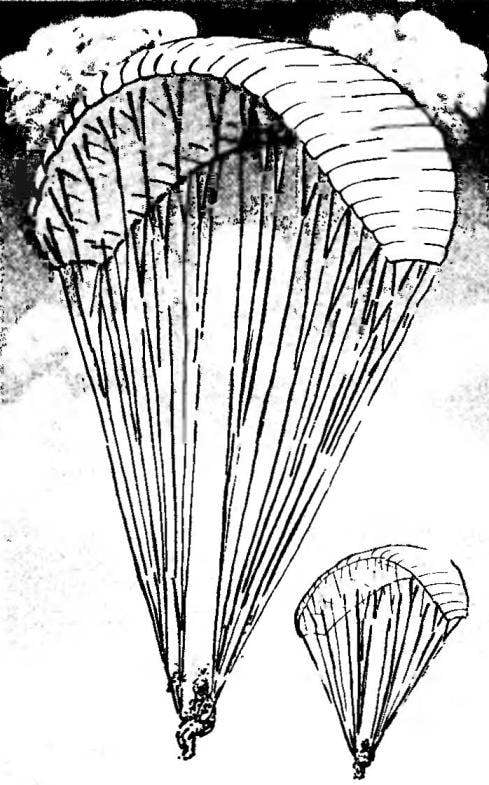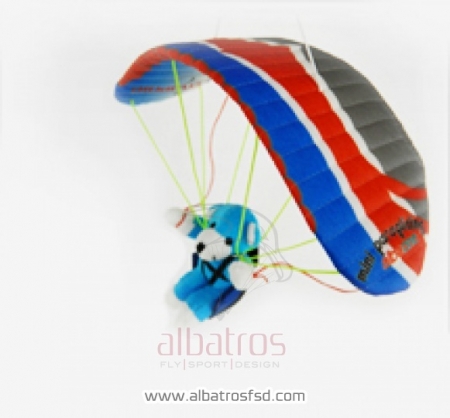

This gave rise to the popular sport known as gliding although the term can also be used to refer to merely descending flight. These allowed longer glides to the next source of ' lift', and so increase their chances of flying long distances.
Paraglider models typesy how to#
As pilots began to understand how to use rising air, gliders were developed with a high lift-to-drag ratio. Gliders were developed from the 1920s for recreational purposes. They returned to glider testing in 1911 by removing the motor from one of their later designs.
Paraglider models typesy series#
The Wright Brothers developed a series of three manned gliders after preliminary tests with a kite as they worked towards achieving powered flight. Using a Montgomery tandem-wing glider, Daniel Maloney was the first to demonstrate high-altitude controlled flight using a balloon-launched glider launched from 4,000 feet in 1905. Lilienthal was the first to make repeated successful flights (eventually totaling over 2,000) and was the first to use rising air to prolong his flight. Montgomery, Otto Lilienthal, Percy Pilcher, Octave Chanute and Augustus Moore Herring to develop aviation. Thereafter gliders were built by pioneers such as Jean Marie Le Bris, John J. non-balloon) man-carrying aircraft that were based on published scientific principles were Sir George Cayley's series of gliders which achieved brief wing-borne hops from around 1849. Hezârfen Ahmed Çelebi is alleged to have flown a glider with eagle-like wings over the Bosphorus strait from the Galata Tower to Üsküdar district in Istanbul around 1630–1632. According to these reports, both used a set of (feathery) wings, and both blamed their crash on the lack of a tail. 1080–1143), a fellow monk and historian, to have flown off the roof of his Abbey in Malmesbury, England, sometime between 10 AD, gliding about 200 metres (220 yd) before crashing and breaking his legs. The monk Eilmer of Malmesbury is reported by William of Malmesbury (c. A 17th-century account reports an attempt at flight by the 9th-century poet Abbas Ibn Firnas near Cordoba, Spain which ended in heavy back injuries. Often the event is only recorded a long time after it allegedly took place. Some simple and familiar types of glider are toys such as paper planes and balsa wood gliders.Įarly pre-modern accounts of flight are in most cases difficult to verify and it is unclear whether each craft was a glider, kite or parachute and to what degree they were truly controllable. However some spacecraft have been designed to descend as gliders and in the past military gliders have been used in warfare. Gliders are principally used for the air sports of gliding, hang gliding and paragliding. Most exploit meteorological phenomena to maintain or gain height. There are a wide variety of types differing in the construction of their wings, aerodynamic efficiency, location of the pilot, controls and intended purpose. Most gliders do not have an engine, although motor-gliders have small engines for extending their flight when necessary by sustaining the altitude (normally a sailplane relies on rising air to maintain altitude) with some being powerful enough to take off by self-launch.
Paraglider models typesy free#
A good pilot can fly with the core up through the cloud.Aerobatic glider with tip smoke, pictured on Jin Lappeenranta, FinlandĪ glider is a fixed-wing aircraft that is supported in flight by the dynamic reaction of the air against its lifting surfaces, and whose free flight does not depend on an engine.

Thermal flying is a technique which needs precision, persistence and time to learn. These thermals help a paraglider to fly in circle and tries to reach the center of the circle as the speed of wind is faster at the center. While rising, these thermals are detached from their source and form a new thermal. Due to this, the thermals are set up which rise with air.

These surroundings include buildings, rocks, and many others. The ground and the surrounds becomes hot due to sunlight. A pilot has to recognize the thermal by the land features and also by identifying a cumulus cloud where humid air reaches and cumulates to a cloud.Ĭross-country flying needs extreme knowledge of air law, flying regulation, and aviation maps which show any restricted airspace etc. Cross-country flyingĬross-country flying is moving from one thermal to the next available thermal.

Slope soaring totally depends upon the steady wind along with the speed of the wind and the skill of the pilot. The pilot flies along with the slope and the lift is being provided by the air. In this kind of slope soaring, the pilot flies by help of air lift. This kind of flight is done with the help of wind which is directed upward with the help of a fixed object like ridge or dune. In this chapter, we will discuss about the types of flying in paragliding.


 0 kommentar(er)
0 kommentar(er)
